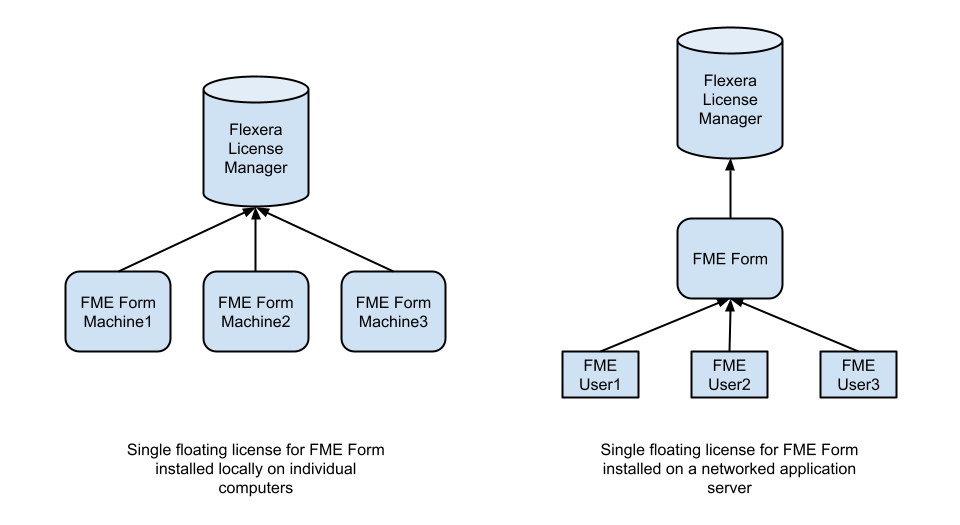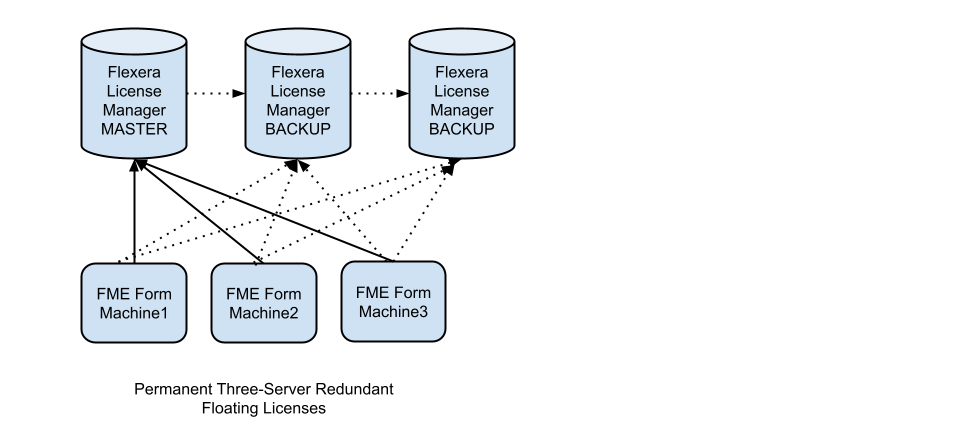FME Form Administrator's Guide: 2025.0
About Floating Licenses
A floating license means that a single computer is provided with a number of licenses and acts as a server by issuing these licenses to any other computer that requests one. A floating license is a common way for a company to share a limited number of licenses among its FME users.
A FlexNet software license manager provides the floating license capability to FME. The FlexNet software is installed on a computer that acts as a license server. Every time FME is started on a computer, the server issues a license, provided there is one still available. When a computer closes FME, that license is returned. For example, consider a five-seat floating license and 30 workstation computers. Each workstation has FME installed. Any workstation can run FME, but only a maximum of five at any one time.
For a full description, visit the Flexera Software website: https://www.flexera.com.
A floating license serves multiple instances of FME Form that are installed locally on each computer (recommended); or to a single installation on a networked application server that is accessed remotely by individual users.

If the expiry dates associated with multiple FME installation serial numbers vary, the floating license applies the shortest expiry date to all serial numbers.
If you need to transfer an existing floating license to a new license server, you must perform a new installation since you still need to request a new license file from Safe Software.
To Install a Floating License
Three-Server Redundant Floating Licenses
The Flexera License Manager allows for redundancy by using a set of three license servers. With three-server redundancy, the floating license server stays functional, handing out its total complement of licenses when any two of the three license servers are up and running.
A master server that performs all licensing operations is elected when the redundant servers are started. The other two servers provide a secure licensing mechanism in the event of hardware failure or if the master node needs to be rebooted.

It is not a requirement for each of the server nodes to have the same architecture or operating system, although they should have reliable network communications with each other and should be on the same subnet. Often, this means that the three servers are located physically close to each other.
To Install a Three-Server Redundant Floating License